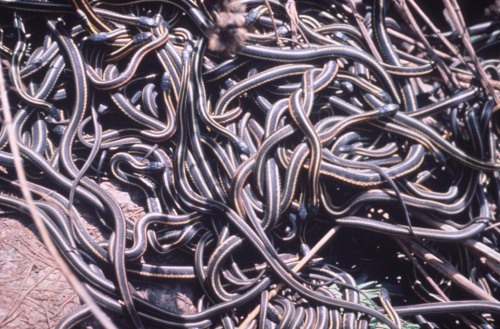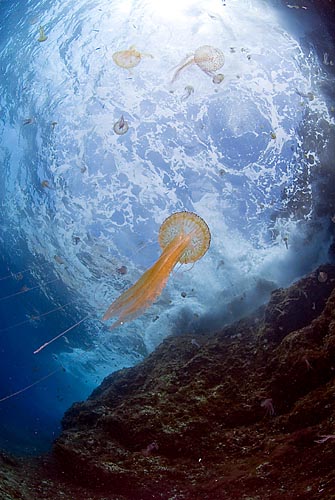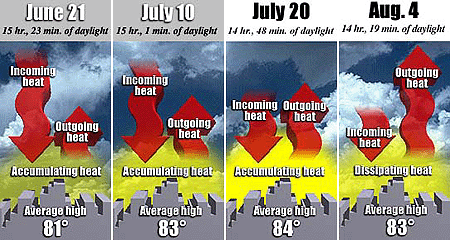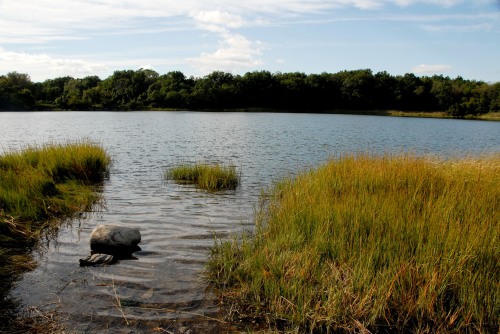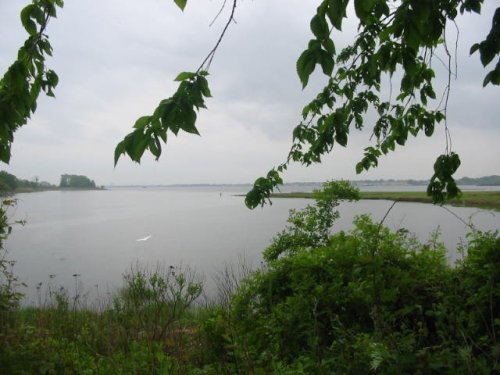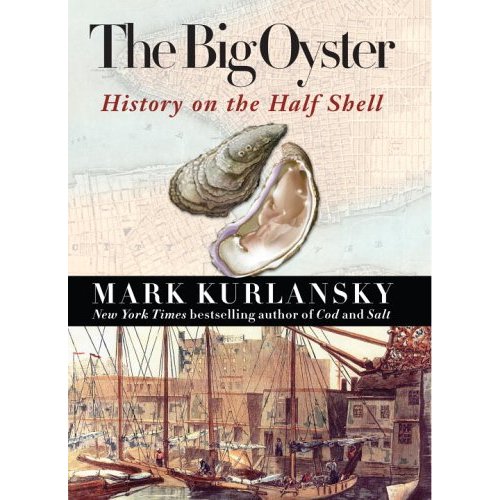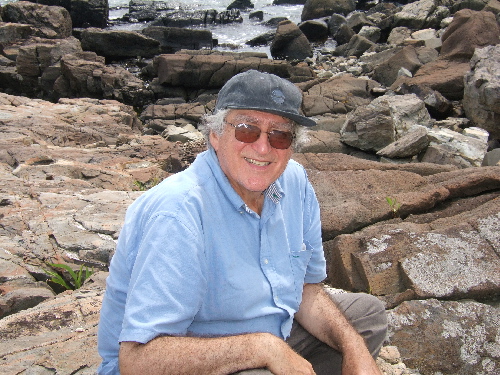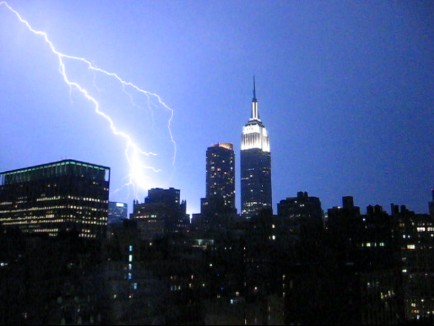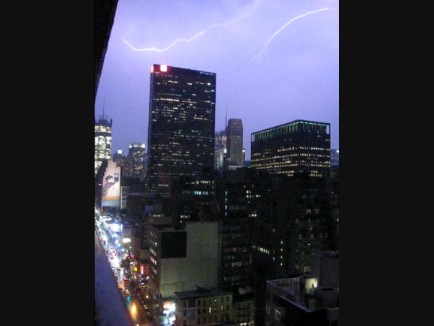
(Click to enlarge.)
Oh, the burden of choice! With a hyper-fun suite of Adventures NYC events sponsored by Backpacker Magazine adding to our usually full menu of eco-recreation, you may find your head spinning a bit!
As always, FREE is the rule and we have a mix of family-friendly events and adult socials.
A few highlights include: a bat walk in Forest Park, kayaking in Central Park lake, wildflower appreciation in Pelham Bay Park, surfing in the Rockaways, fishing in Wagner Park, kayaking for mulberry picking with the LIC Community Boathouse, Brooklyn Critical Mass Bike Ride, and the Oyster hoopla in the invitation image above.
WildWire will soon be even more beefed up as we gather better data on New York State and National Parks in the area. We’ll also set up a special button so that you can instantly access each week’s listings on Nature Calendar.
We also intend to arrange special environmental service outings this summer, in cooperation with partners from the Nature Network (see out sidebar). Please join us as we do bioblitzes, seek spotted salamanders, photograph and video flying squirrels, and plant trees.
The easy things you can do immediately to help Nature Calendar continue growing include:
1) Alert us to your events, especially when you need volunteers.
2) Link to us (we will soon have a links page as well).
3) Tell others to visit our page daily.
4) Provide technical help.
FRIDAY, JUNE 13
BIKING, BROOKLYN, 7PM-Approx. 10PM
Celebrate and liberate Brooklyn bicycling by participating in the borough’s peaceful and fun Critical Mass ride! Meet at Grand Army Plaza or the Brooklyn side of the Williamsburg Bridge. Red rear and white front lights make the ride to the event and home again safer. Besides, it’s pretty to see all of those blinking lights! Riding through Prospect Park at night is especially beautiful, communing with the sights and sounds that make a space “green” even when the color itself is submerged in the night’s darkness.
Stick with the crowd and you’ll usually find fun gatherings follow the event, often with the joyous Time’s Up crowd.
ASTRONOMY, FLOYD BENNETT FIELD
Saturn beckons you! Come enjoy this and other sights (even if we can’t enjoy them as sites yet) with telescope-equipped Art Kunhardt and Steven Lieber, friendly stargazers with the Amateur Astronomers Association of New York City. Visit the AAA’s Floyd Bennett Field webpage for more directions and details.
SATURDAY, JUNE 14
BIRDING, MANHATTAN, 9AM-11AM
Hike in search of the Inwood red-tailed hawks and other raptors. Come to the Inwood Hill Nature Center, Inwood Hill Park. Enter park at West 218th Street and Indian Road. Call 212-304-2365 for more information.
FOREST CARE, BROOKLYN, 10AM-2PM
Volunteer to care for Brooklyn’s last forest. Yeah, stunning and sad to think it’s come to that, but the borough’s last forest is in Prospect Park. But you can help it thrive, make friends, and have fun along the way! The Weekend Woodlanders are quiet heroes and you can be one too. Meet at the Picnic House. Call 718-965-8960 for more information.
GARDENING, BROOKLYN, 10AM-NOON
Our great green friends at New York Restoration Project will help you learn how to attract butterflies to your garden. As powerful pollinators they will making your garden more robust while you rack up great karma points for preserving beautiful signature species of summer. Go to the Jane Bailey Memorial Garden in Greenpoint, Brooklyn (342 Green Street, near Provost).
KAYAKING, QUEENS (Two trips)
Long Island City Community Boathouse. See the group’s website (www.licboathouse.org) for more information.
Dumbo Brunch Paddle, 10AM-5PM
A fun and exciting outing to one of New York City’s most beautiful
urban settings, made famous by numerous films and television shows. Dumbo
boasts a thriving arts scene and top-rated eateries include Bubby’s Pie
Company, Grimaldi’s Pizza, Jacques Torres Chocolate, and Brooklyn Ice Cream
Factory. Eat inside, or be responsible with garbage in the beautiful park.
“Mulberry Night” Paddle, 5PM-9PM
A cruise up the east channel of the East River, through Hell Gate, and
up to the west side of Randalls Island, where mulberries should be ripe.
We’ve nicknamed this place, “Mulberry Coast.” This trip will be featured on
Nature Calendar ( http://www.naturecalendar.com ). Feel free to bring any
food in a secure container you think will keep for the trip and mix well
with berries. Also, bring a sheet or tarp to spread on the ground to gather
berries after we shake branches and a container to bring some home. The
return trip will take us through sunset and potentially into nightfall.
Imagine drifting back along the east channel with berry-stained fingers in
the purple night.
BIKE “DRIVER’S ED”, BROOKLYN, 1PM-3PM
Do you want your kid to get healthy biking exercise and to one day explore this town on pedal-powered wheels? Great idea! But first help him or her become a safer urban bicyclist by taking Bike New York’s intensive, two-hour class, which is offered in partnership with the Brooklyn Public Library. This week’s class is to be held at the Flatbush Branch from 1PM-3PM. Click here for more information.
SURFING, QUEENS, NOON-6PM
Try to keep your chin off the sand and harder ground when you compete as a surfer or skate boarder in this rockin’ Rockaways event! The second annual Rockstock and Barrels festival. Boards of both kinds will be on sale at the event, at Beach 90th Street. Call 718-318-4000 for more information.
As a side note, wouldn’t it be great if someone started a free “walk-up” surfing program like we see with paddling?
ROWING, BRONX, NOON-5PM
Come join Rocking the Boat for public rowing of its gorgeous, hand-crafted Whitehall boats on the thriving Bronx River! Meet at the Congressman Jose E. Serrano Riverside Campus for Arts and the Environment in Hunts Point. For directions, click here.
PADDLING, BROOKLYN, 930AM-1130AM
Sebago Canoe Club offers public paddling on Saturday morning and Wednesday evening. The program is free, but you’ll need to pay a $10 insurance fee that is not kept by the club. While you’re there, be sure to check out there great new garden and native plantings! For more information about the Open Paddle program, which has limited seating, please visit their webpage.
TREE CARE, QUEENS, 930AM-NOON
Friends of Gantry Neighborhood Parks are a jolly crew of do-green-gooders, or is that green-do-gooders? Get out and help tend to western Queens trees and gardens with the friendly and hard-working crew! Meet at Brasil Coffee House at 49th Avenue and Vernon Blvd. in Long Island City for a little treat – a pick-you-up snack. By 10AM you’ll be pruning trees, cleaning pits, and fertilizing. If you don’t have a green thumb, you can still help a lot – they need photographers, traffic directors, and people to assist more experienced hands. It’s a great chance to learn. For more information, email gantryparkfriend@aol.com.
HIKING, STATEN ISLAND, 10AM-3PM (Padded estimate)
Part of Adventures NYC, enjoy trek through eight miles of forests, streams, ponds, and meadows as you cross the glorious Greenway from Great Kills Park to Willowbrook Park. Wear hiking boots and bring water and a snack.
Arrive at the Great Kills Park parking lot where Buffalo Street meet Hylan Boulevard.
FISHING, MANHATTAN, 10AM-1PM
See the fish, be inspired by the fish! This kid-friendly catch-and-release outing (rod and bait provided) to Wagner Park is enhanced by fish-related art projects. Children’s songwriter Suzi Shelton and her band will perform songs from their new CD, No Ordinary Day.
And while you’re thinking of Wagner Park…
BIRDING, MANHATTAN, 11AM-1PM
Learn from a naturalist about the birds nesting and resting in the parks that stretch from “river to river” (okay, technically neither this latitude of the Hudson River nor the entire East River is a river…so, estuary to strait?). Binoculars and field guides will be available to help you along. Meet at Wagner Park, and call 212-267-9000 for more information.
WALKING, MANHATTAN, 11AM-1PM
“Amble through the Ramble” of Central Park and trade in glare and grit for 38-acres of streams and woods, the street grid for a maze of pathways. Meet at Belvedere Castle (enter at 79th Street on either side and walk to the park’s longitudinal center) and wear comfortable shoes.
BIRDING, BROOKLYN, 8AM-10AM
Learn the basics of birding (Lesson One: Get up early) with the Urban Park Rangers in one of our lesser-known jewels, the Salt Marsh Nature Center in Marine Park (East 33rd Street and Ave. U). Call 718-421-2021 for more information.
CANOEING, MANHATTAN, NOON-3PM
Another fun Adventures NYC event awaits those over eight years old who make the first-come, first-served cut. Gather at the Dana Discovery Center in Central Park (110th Street & Lennox Avenue). For more information, call 212-860-1376
KAYAKING, MANHATTAN, 10AM-5PM
Try out kayaking with 20-minute introductory paddles (running between 10AM and 5PM) on the Hudson River south of 72nd Street both Saturday and Sunday. Please dress for getting wet and know how to swim. Call the Downtown Boathouse for weather updates at 646-613-0740 and further information at 212-408-0219.
CANOEING AND BIRDING, BROOKLYN, 11AM-3PM
Paddle out along Gerritsen Creek with the Urban Park Rangers for a rare trip to “lonely White Island” where birds abound. Gather at the Salt Marsh Nature Center in Marine Park (East 33rd Street and Avenue U). For more information and to register, call 718-421-2021.
WALKING, MANHATTAN, 11AM-1230PM
The Central Park Conservancy Garden is a 70-year old treasure. Each Saturday from April 5 through October 25, a garden staff person will stroll with you as he or she explains its history, plantings, and design. Meet at the Vanderbilt Gate, where Fifth Avenue meets 105th Street.
WALKING, BRONX, 11AM-2PM
It’s a world of wildflowers…at least for the past 130-250 million years. We newcomer species types have the privilege of naming them. Come see and identify the beauties of Van Cortlandt Park. Enter the Enter the park at West 246th Street and Broadway. For more information, call 718-548-0912.
And while you’re in the Bronx (and call to see how early you might finish the walk), why not bike straight across to…
GARDENING, BRONX, 1PM-3PM
Join “passionate plantsman” David Culp at Wave Hill as he shares marvelous new perennial cultivars for your garden. Walk around the gardens with David to observe how new plants and old favorites can be combined artfully. Select plants available in the Wave Hill Shop. Come to 675 West 252nd Street. Call 718-549-3200 for more information.
SALT MARSH EXPLORATION, MANHATTAN, NOON-3PM
Learn to know mummichogs from mummenschanz and how tough marsh life can be. Swing over to the Inwood Hill Nature Center. Enter the park at West 218th Street and Indian Road. Call 212-304-2365 for more information.
RUNNING, KINDA-SORTA, STATEN ISLAND, 1PM-3PM
Make Dad sweat a little on Father’s Day with a “Chubby Hubby Fun Run” and other amusing races at Clove Lakes Park. Meet in the oval, at 1150 Clove Road, by the playground. As for the pie eating contest…I suppose it’s too much to hope they’re vegan, organic, local… J
For more information, call 718-816-6172
WALKING, BRONX
Few creatures are as adventurous yet delicate as butterflies – imagine a life in which you emerge from a cocoon entirely transformed and immediately set off on a winged journey through places you’ve never seen. Actually, that sounds like something we all might envy at times. Join this Adventures NYC program to appreciate those fluttering through our largest city park, at Pelham Bay. Gather at the Pelham Bay Park Ranger Station, where Bruckner Boulevard and Wilkinson Avenue meet. For more information, call 718-885-3467.
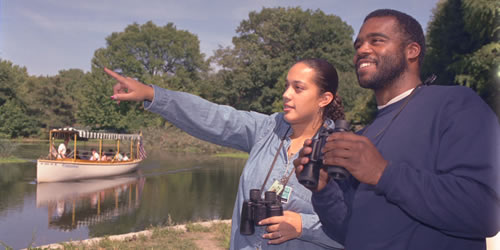
WALKING, BROOKLYN, 3PM-4PM
Nature is a few steps and eye openers away with Prospect Park’s Discover Tours (seen at the top of the page) on Saturdays and Sundays. In June the focus is on the plants and animals that thrive in the parks’ waterways – streams, waterfalls, and Brooklyn’s only lake. Meet at the Audubon Center.
NIGHT WALKING, QUEENS, 8PM until…mwuh hah hah!
The bats, owls, raccoons and untold mysteries await you in Forest Park. Bring a flashlight and your courage if you join this Adventures NYC tour. Gather at the Forest Park Visitor Center (Woodhaven Boulevard& Forest Park Drive). Call 718-846-2731 for more information.
SUNDAY, JUNE 15
WALKING, MANHATTAN, 8AM-10AM
Walk beautiful Inwood Hill Park with Mike Feller, Chief Naturalist for the New York City Department of Parks and Recreation. Learn about your local flora and fauna, and how you can help restore and protect their habitats. Dress for a hike from hats to shoes, and feel free to bring a field guide and notepad if you like. Enter the park at 218 Street and Indian Road. Meet on the little bridge on the eastern end of the salt marsh.
BIRDING, STATEN ISLAND, 9AM-NOON
Don’t hate the birds for dragging you out of bed when your friends are sleeping off Saturday’s debaucheries. The early rise and journey to Staten Island is well worth it! The friendly and knowledgeable Urban Park Rangers will introduce you to your local avian stars, and the techniques you’ll need to fully admire them. Meet at Blue Heron Park Preserve (222 Poillon Avenue between Amboy Road and Hylan Boulevard). Call 718-967-3542 for more information.
KAYAKING, MANHATTAN, 10AM-5PM
Try out kayaking with 20-minute introductory paddles (running between 10AM and 5PM) on the Hudson River south of 72nd Street. Please dress for getting wet and know how to swim. Call the Downtown Boathouse for weather updates at 646-613-0740 and further information at 212-408-0219.
FISHING, QUEENS, 11AM
Catch-and-release fishing in Kissena Park (my childhood park!), with some equipment provided. Meet behind the Kissena Playschool (Oak Avenue and 164th Street).
FISHING, BROOKLYN, 11AM
Catch-and-release fishing in Prospect Park, with poles and bait provided. Meet outside the Audubon Center.
FISHING, MANHATTAN, 11AM
Drop a line in Central Park, with equipment provided. Meet at the Dana Discovery Center at 110th Street and Lennox Avenue. For more information, call 212-860-1376.
HIKING, MANHATTAN, 11AM-2PM?
The “Northwest We Go” hike starting at Fort Washington Park has someone at the New York City Department of Parks and Recreation is feeling cryptic and scary. I find that intriguing… “A serious trek through the three northwest parks of Manhattan. Bring plenty of water, good shoes, and binoculars–you never know what we will see.”
No phone number or more specific instructions are provided. Spookier still. Sounds like a job for 311. One thing Nature Calendar can tell you, however, is that you’ll be in fantastic peregrine falcon country!
CANOEING, BRONX, 11AM
Learn the basics of canoeing with the Urban Park Rangers at Van Cortlandt Park. It’s a first-come-first-served event, so hurry up! Bring water, sunblock, and a snack to the park entrance at West 246th Street and Broadway. For more information, call 718-548-0912.
WALKING, MANHATTAN, 1PM-230PM
Have the famed heather gardens, and more, of Fort Tryon revealed to you by expert horticulturalists. The panoramic views of the Hudson River and Palisades are marvelous. There’s a nifty preview video here. Go to the Heather Garden entrance at Margaret Corbin Circle in Fort Tryon Park, where Cabrini Boulevard and Fort Washington Avenue meet.
KAYAKING, QUEENS, 1PM-5PM
Try out kayaking with 20-minute introductory paddles (running between 1PM and 5PM) arranged by the LIC Community Boathouse on the East River where Vernon Boulevard meets 31st Avenue in Astoria. You’ll see Socrates Sculpture Park’s beach at Hallets Cove and a wooden staircase on a wall. Please dress for getting wet and know how to swim.
WALK, MANHATTAN, NOON-115PM
Stroll with the Central Park Conservancy and rediscover a place both familiar and novel. Do you know where to find a hidden bench that tells time? Or a sculpture that celebrates fresh water? Well, neither do I, and I’m a native. Get in the know by meeting inside the park at Fifth Ave. and East 72nd Street, in front of the Samuel Morse statue.
WALKING, BROOKLYN, 3PM-4PM
Nature is a few steps and eye openers away with Prospect Park’s Discover Tours (seen at the top of the page) on Saturdays and Sundays. In June the focus is on the plants and animals that thrive in the parks’ waterways – streams, waterfalls, and Brooklyn’s only lake. Meet at the Audubon Center.
TUESDAY, JUNE 17
OYSTER GARDENING HOOPLA, MANHATTAN, 530PM
Come celebrate and learn about the New York Oyster Program and the NY-NJ Baykeeper Oyster Gardening Program from Harbor School students and expert ecologists. The event is hosted by oyster-restoring pioneer estuary group The River Project. Come to Pier 40, at the end of Houston Street. The full invitation is above.
WEDNESDAY, JUNE 18
WALKING, MANHATTAN, 1PM
“Amble through the Ramble” of Central Park and trade in glare and grit for 38-acres of streams and woods, the street grid for a maze of pathways. Meet at Belvedere Castle (enter at 79th Street on either side and walk to the park’s longitudinal center) and wear comfortable shoes.
GARDENING, BRONX, 1PM
Learn from Laurel Rimmer at Wave Hill how to make a killer salad with greens and herbs you grow yourself (and are available at the garden shop) – bonus points for those opting for indigenous species! Okay, so it’s more about eating than gardening in the immediate sense. Munch. Go to 675 West 252nd Street. Call 718-549-3200 for more information.
PADDLING, BROOKLYN, 530PM-730PM
Sebago Canoe Club offers public paddling on Saturday morning and Wednesday evening. The program is free, but you’ll need to pay a $10 insurance fee that is not kept by the club. While you’re there, be sure to check out there great new garden and native plantings! For more information about the Open Paddle program, which has limited seating, please visit their webpage.
Read Full Post »


